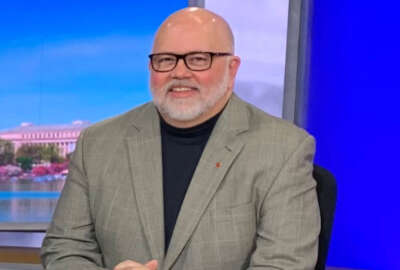
Administrative changes are the first step in civil service modernization
Administrative changes have the advantage of being entirely within the power of the executive branch, says Jeff Neal. There is no need to wait for Congress or d...
With many agencies struggling to recruit new talent, an aging workforce whose institutional knowledge will be challenging to replace, and a civil service system that has been unchanged in decades, modernization is a mission-critical need for the federal government.
When we talk about modernization, the first thing most people think of is some sort of statutory reform, such as what was done with the Civil Service Reform Act of 1978. It is true that the law should be changed with respect to many aspects of the civil service, but there is also much that can be done administratively.
Administrative changes have the advantage of being entirely within the power of the executive branch. There is no need to wait for Congress or deal with partisan politics. There are some processes, such as public comment periods on regulatory changes, that take time, but those are not remotely close to the challenges of getting legislation passed.
So what do administrative changes look like? Do they have the potential to really make a difference? I decided to lay out some options for administrative changes so you judge for yourself whether they would make a difference. Here are just a few of the changes I recommend:
Senior Executive Service hiring
Effective leaders are essential in high-performing organizations. Executive hiring processes should be designed to recruit and retain those leaders. Yet anyone who has applied for a Senior Executive Service position knows that the process is bureaucratic and serves as a disincentive to applying for an SES position. Applicants write lengthy applications that must address the five Executive Core Qualifications (ECQs) and any technical qualifications (TQs) the agency identifies. The TQs should be limited to those qualifications that are essential for the job, but it is common to see SES jobs advertised with five or more TQs. The result is that, unlike the brief résumés used in the private sector, résumés for SES jobs can be 20 pages long — or more.
Once a selection is made, the agencies must seek Office of Personnel Management approval of the ECQs for the selectee. The process is too complicated, too bureaucratic, and adds little value to the search for talent for executive roles. The law requires OPM to “prescribe criteria for establishing executive qualifications for appointment …” The most restrictive reading of that means that OPM decides what the qualifications must be. A less rigid interpretation is that OPM must establish a means of defining the requirements. 5 USC §3392 says “Qualification standards shall be established by the head of each agency for each Senior Executive Service position in the agency.” The agencies must establish requirements consistent with OPM guidance, but OPM has the authority to dramatically streamline the process of SES hiring and make it more likely that agencies can recruit executive talent.
Expansion of direct hire authority
“Direct hire” is just that — it removes many of the administrative burdens in the hiring process and allows agencies to focus on identifying and recruiting the talent they need. The basic requirement for Direct hire is that there is a severe shortage of candidates or a critical hiring need. 5 USC § 3304 says, “The Office [of Personnel Management] shall prescribe, by regulation, criteria for identifying such positions and may delegate authority to make determinations under such criteria.” OPM should delegate authority for making those decisions to agencies or significantly increase their own approvals of direct hire authority. This flexibility would speed new hires for hard-to-fill jobs in high demand occupations and in agencies that have critical vacancies due to lack of hiring in the previous administration.
Delegation of classification, qualifications and training requirements to occupation-based communities of practice
The approach OPM uses for writing classification and qualifications requirements involves subject-matter experts, but the processes take so many years that the government is not able to adequately react to changing labor markets or rapidly evolving job needs. We need a far more agile process that puts the subject-matter experts in the driver’s seat and makes OPM the adviser to the process. Using this model, the CIO Council would drive requirements for IT professionals, the CFO Council for financial management, and so on. For agency-specific work, the agencies would receive delegated authority to manage the requirements and create councils of subject-matter experts to do the work.
Such a change would relieve OPM of a workload they are not staffed to carry out, and put the people who know the work in charge of managing their occupations. It would not require legislation, as 5 U.S. Code §1104 says, “the Director may delegate, in whole or in part, any function vested in or delegated to the Director, including authority for competitive examinations … to the heads of agencies in the executive branch and other agencies employing persons in the competitive service.”
Simplification of delegated examining authority
“Delegated examining” is the term for agencies advertising jobs for candidates outside of the civil service. Many years ago OPM’s predecessor, the Civil Service Commission, handled most of the hiring process for outside candidates. They administered civil service exams and referred candidates to agencies. Delegated examining units (DEUs) in agencies were the exception rather than the rule. Over time, the Commission was replaced by OPM, hiring processes changed, and OPM’s staffing was reduced, and the process moved from OPM to agencies.
Now a DEU is the norm. The problem is that the process is absolutely miserable, and has no room for innovation. Agency DEUs must follow the processes in OPM’s Delegated Examining Operations Handbook. The 318-page Handbook prescribes virtually every step of the process and is a good example of taking a statutory requirement to extremes. 5 U.S.C. §1104 says OPM may delegate authority for examining and “The Office shall establish standards which shall apply to the activities of the Office or any other agency under authority delegated under subsection (a) of this section” and “The Office shall establish and maintain an oversight program to ensure that activities under any authority delegated under subsection (a) of this section are in accordance with the merit system principles and the standards established under paragraph (1) of this subsection.”
That does not mean OPM has to prescribe every step of the process. The DEU process could be simplified and the handbook reduced to the minimum needed to ensure compliance with Merit System Principles and requirements such as veteran preference. If OPM reduced its DEU requirements to the minimum required by law, agencies could be freed to innovate in ways that are simply not going to happen when everyone in government has to follow a 318-page handbook.
These changes are only a few examples of steps to modernizing the civil service within the confines of existing law. They would make OPM’s workload more manageable, focus the agency on providing assistance and oversight, and empower agencies to play a greater role in talent management to meet mission needs.
So, why not do these things now? The biggest concern I hear about making changes such as these is the idea that agencies cannot be trusted to make decisions based on merit and in compliance with the law. We trust the Defense Department with nuclear weapons, but we cannot trust them with HR decisions? The Justice Department can enforce the law, but they cannot be trusted with HR decisions? NASA can successfully land Perseverance on Mars, but they cannot be trusted to hire the people who did it? We trust agencies with critical missions every day. I think we can trust them to manage their own employees.
Jeff Neal authors the blog ChiefHRO.com and was previously the chief human capital officer at the Department of Homeland Security and the chief human resources officer at the Defense Logistics Agency.
Copyright © 2024 Federal News Network. All rights reserved. This website is not intended for users located within the European Economic Area.



